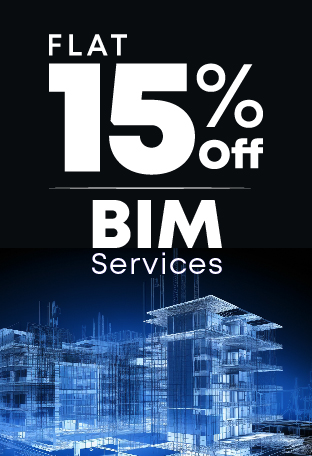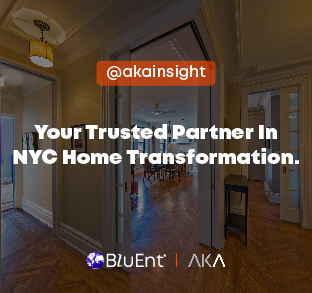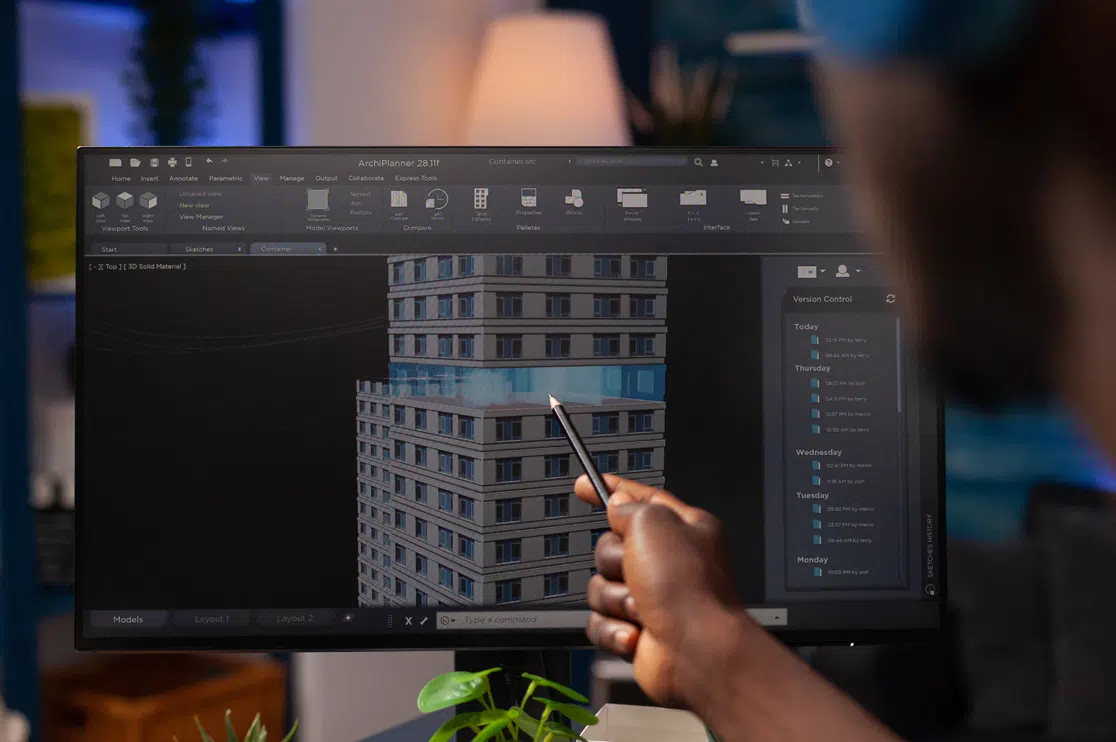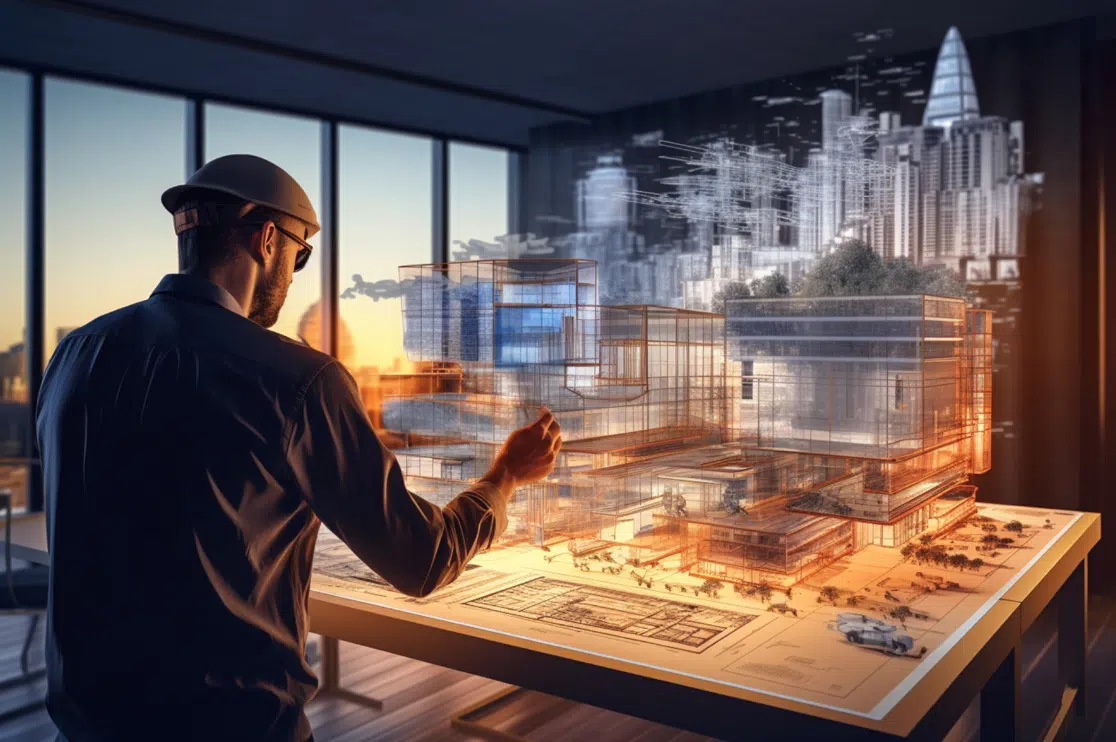Digital twins of humans may still be a while off, but digital twin technology can already be found in an array of sectors, notably the construction industry.
With digital twins, we see a further advancement and implementation of data exchange, automation, de-risking rollouts of products, and joined-up manufacturing processes. Industry experts can monitor operations in real time, and hence, for example, provide alerts of potential issues or failures.
Digital twins in construction will become increasingly common, so in this article, we’ll give you the lowdown on this technology.
Table of Contents:
Introduction: What is Digital Twin Technology?
A digital twin (sometimes also called a “virtual twin”) is an accurate virtual prototype of an object in real life that can analyze, monitor, and improve the object’s performance.
The relevant object is outfitted with sensors dealing with critical areas of functionality. Let’s say the object is a wind turbine. In his case, the sensors would provide data about the turbine’s performance, weather conditions, temperature, energy output, etc. This data would then be relayed to a processing system and integrated into the digital “twin” or copy.
Once provided with such data, a digital twin can be used to study performance issues, generate potential improvements, and run simulations. These can provide valuable insights, which can be applied to the physical object.
Digital twin technology gained recognition in 2002 when Michael Grieves of the Florida Institute of Technology applied the concept to manufacturing. However, digital twinning was more widely implemented much later, in the 2010s, when AI, IoT, big data, and cloud computing began to gain traction.
A digital twin is dynamic and “live.” It is updated every time its real-world counterpart undergoes a change. The twin can also “learn,” absorbing knowledge from machines, people, and its own environment. Furthermore, digital twin technology can be applied during any stage of product creation, from design to disposal.
Virtual twins are developed with visualization technology, such as augmented reality (AR) and 3D modeling.
Currently, the technology is used mostly in the manufacturing industry, as well as the healthcare and energy sectors. We can also expect to see its further adoption in smart cities and space exploration.
Types of Digital Twins
- Process Twins: Responsible for processes, such as manufacturing processes. You can create different scenarios of a manufacturing process and view the different outcomes. This helps in downtimes, preventative maintenance, safety and efficiency.
- Product Twins: These simulate various objects. This helps to make necessary adjustments and develop more efficient designs. Product twins can also be used for controlling product performance.
- System Twins: These are copies of entire systems, such as factories. They collect huge amounts of operational data to provide insights and new business opportunities by optimizing processes and supporting system integrity.
Digital Twin Examples
There is a wide range of applications for digital twinning. Some examples include:
- Processes simulated in factories
- Monitoring and predicting the well-being of patients in healthcare
- Telemetry sensors providing feedback from vehicles
Advantages of Digital Twins in Construction
1. Predictive Maintenance
Predictive maintenance is one of the core benefits of digital twins. That is, you get the capacity to solve problems in advance.
Data analytics allows predictions of potential issues or breakdowns. For example, a spare part that is getting old and needs to be replaced. This helps to avoid damage and unnecessary downtime.
2. Streamlined Designs
Any product will go through multiple iterations before there is a working prototype. This process requires a significant amount of labor and time, and is hence very expensive.
Virtual modeling reduces these issues at the design stage, leading to more seamless prototyping.
3. Reduced Time to Market
Most companies struggle to get to market faster than their competitors. However, this issue usually crops up due to long iterations and the requirement for constant improvements.
Digital twin assistance can reduce time to market. A product’s lifecycle can be performed digitally, and improvements can be made with greater efficiency and speed.
4. Product End-of-Life
Once a product reaches the end of its life, digital twins can help manufacturers decide what to do with it. They can determine which products can be recycled or harvested.
5. Refined Workspaces
Various kinds of workplace software (such as CMMS, CAFM, and IWMS) can use data from digital twins to provide insights about the workplace. This leads to data-backed decision-making that leads to more productive workplaces.
The Relationship Between Digital Twins and BIM
While their concepts are similar, digital twinning and Building Information Modeling (BIM) are not the same thing. The confusion between the two arises from the fact that they both deal with virtual reconstructions of built environments.
However, the capacity in which they provide support differs. BIM focuses on construction and design, helping to keep things within budget, true to form, and on time. Digital twin technology focuses on how people interact with built environments and helps buildings meet and exceed their intended purposes.
A good way to think about BIM is as a layered view of a building, while a good way to think about a digital twin is as a support for IoT and smart building systems.
You can consider a digital twin output of the BIM process and a “living” version of the object view. Having said that, both BIM and digital twins help professionals approach assets not just as siloed, capex-focused tasks but as ongoing projects.
The digital twin market is expected to reach 73.5 billion USD by 2027, growing at a CAGR of 60.6% from 2022.
It has promising potential due to the growing emphasis on digital twin tech in manufacturing to reduce costs and streamline supply chains. The potential is further bolstered by increasing focus on predictive maintenance and demand in the healthcare industry.
Digital twin adoption will enable industry leaders to find new ways of using collaborative data in operational strategies. Combined with BIM, it is poised to pave the way for a new era in construction and architecture.
However, implementing BIM can be costly and time-consuming if you don’t already have a trained in-house team. That’s why so many companies turn to BluEntCAD.
We provide BIM modeling services to architects, general contractors, design-build contractors, civil and MEP engineers, and HVAC and MEP subtrades. Our services cover scan-to-BIM, Revit Modeling, and BIM clash detection.
Ready to leverage the power of BIM for your next construction or renovation project? Contact us for BIM modeling services today!
Maximum Value. Achieved.







 How AI BIM Modeling Shaping the Future of Residential Construction?
How AI BIM Modeling Shaping the Future of Residential Construction?  How BIM Services Enhance Collaboration, Design Choices, and Project Efficiency for Architects? – A Guide
How BIM Services Enhance Collaboration, Design Choices, and Project Efficiency for Architects? – A Guide  How is Artificial Intelligence in Construction Design Transforming Architectural Landscape?
How is Artificial Intelligence in Construction Design Transforming Architectural Landscape?  BIM Coordination Benefits for Contractors in the Preconstruction Stage
BIM Coordination Benefits for Contractors in the Preconstruction Stage